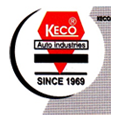Global Bio-plastic Market Technology Landscape, Trends and Opportunities Report 2021: Focus on Packaging, Textile, Agriculture and Horticulture, Automotive, Electronics, Building and Construction - ResearchAndMarkets.com
The "Technology Landscape, Trends and Opportunities in the Global Bio-plastic Market" report has been added to ResearchAndMarkets.com's offering.
The technology in bio-plastic has undergone significant change in recent years, from PLA (polylactic acid) to PHAs (polyhydroxyalkanoates) based bioplastic. The rising wave of new technologies such as biodegradable bio-plastics are creating significant potential in packaging and agriculture and horticulture applications due to growing environmental concerns and increasing awareness of the economic & ecological viability of using bioplastics.
In agrochemical market, various technologies such as biodegradable and non-biodegradable bioplastics are used in the packaging, textile, agriculture and horticulture, automotive, electronics, and building and construction applications. Improvement in scope of bio-plastics across end-user industries, shift in consumer preference toward eco-friendly plastic products, and rising use in food packaging and compostable bag applications are creating new opportunities for various bio-plastic technologies.
This report analyzes technology maturity, degree of disruption, competitive intensity, market potential, and other parameters of various technologies in the bio-plastic market.
The study includes technology readiness, competitive intensity, regulatory compliance, disruption potential, trends, forecasts and strategic implications for the global bio-plastic technology by application, technology, and region
Some of the bio-plastic companies profiled in this report include NatureWorks, BASF, Total Corbion PLA, Mitsubishi Chemical, Biome Bioplastics, Plantic Technologies, Bio-On, Danimer Scientific, Novamont, and Toray Industries
This report answers the following 9 key questions:
- Q.1 What are some of the most promising and high-growth technology opportunities for the bio-plastic market?
- Q.2 Which technology will grow at a faster pace and why?
- Q.3 What are the key factors affecting dynamics of different technologies? What are the drivers and challenges of these technologies in bio-plastic market?
- Q.4 What are the levels of technology readiness, competitive intensity and regulatory compliance in this technology space?
- Q.5 What are the business risks and threats to these technologies in bio-plastic market?
- Q.6 What are the latest developments in bio-plastic technologies? Which companies are leading these developments?
- Q.7 Which technologies have potential of disruption in this market?
- Q.8 Who are the major players in this bio-plastic market? What strategic initiatives are being implemented by key players for business growth?
- Q.9 What are strategic growth opportunities in this bio-plastic technology space?
Key Topics Covered:
1. Executive Summary
2. Technology Landscape
2.1. Technology Background and Evolution
2.2. Technology and Application Mapping
2.3. Supply Chain
3. Technology Readiness
3.1. Technology Commercialization and Readiness
3.2. Drivers and Challenges in Bio-plastic Technologies
3.3. Competitive Intensity
3.4. Regulatory Compliance
4. Technology Trends and Forecasts analysis from 2013-2024
4.1. Bio-plastic Opportunity
4.2. Technology Trends (2013-2018) and Forecasts (2019-2024)
4.2.1. Biodegradable
4.2.2. Non-Biodegradble
4.3. Technology Trends (2013-2018) and Forecasts (2019-2024) by Application Segments
4.3.1. Packaging
4.3.1.1. Biodegradable
4.3.1.2. Non-Biodegradable
4.3.2. Textile
4.3.2.1. Biodegradable
4.3.2.2. Non-Biodegradable
4.3.3. Agriculture and Horticulture
4.3.3.1. Biodegradable
4.3.3.2. Non-Biodegradable
4.3.4. Automotive
4.3.4.1. Biodegradable
4.3.4.2. Non-Biodegradable
4.3.5. Electronics
4.3.5.1. Biodegradable
4.3.5.2. Non-Biodegradable
4.3.6. Building and Construction
4.3.6.1. Biodegradable
4.3.6.2. Non-Biodegradable
4.3.7. Other
4.3.7.1. Biodegradable
4.3.7.2. Non-Biodegradable
5. Technology Opportunities (2013-2024) by Region
5.1. Bio-plastic Market by Region
5.2. North American Bio-plastic Market
5.2.1. United States Bio-plastic Market
5.2.2. Canadian Bio-plastic Market
5.2.3. Mexican Bio-plastic Market
5.3. European Bio-plastic Market
5.3.1. The United Kingdom Bio-plastic Market
5.3.2. German Bio-plastic Market
5.3.3. French Bio-plastic Market
5.4. APAC Bio-plastic Market
5.4.1. Chinese Bio-plastic Market
5.4.2. Japanese Bio-plastic Market
5.4.3. Indian Bio-plastic Market
5.4.4. South Korean Bio-plastic Market
5.5. ROW Bio-plastic Market
6. Latest Development and Innovation in Bio-plastic Technologies
7. Companies/Ecosystem
7.1. Product Portfolio Analysis
7.2. Market Share Analysis
7.3. Geographical Reach
8. Strategic Implications
8.1. Implications
8.2. Growth Opportunity Analysis
8.2.1. Growth Opportunities for the Bio-plastic Market by Material Technology
8.2.2. Growth Opportunities for the Bio-plastic Market by Application
8.2.3. Growth Opportunities for the Bio-plastic Market by Region
8.3. Emerging Trends in the Bio-plastic Market
8.4. Disruption Potential
8.5. Strategic Analysis
8.5.1. New Product Development
8.5.2. Capacity Expansion of the Bio-plastic Market
8.5.3. Mergers, Acquisitions, and Joint Ventures in the Bio-plastic Market
9. Company Profiles of Leading Players
9.1. NatureWorks
9.2. BASF
9.3. Total Corbion PLA
9.4. Mitsubishi Chemical
9.5. Biome Bioplastics
9.6. Plantic Technologies
9.7. Bio-On
9.8. Danimer Scientific
9.9. Novamont
9.10. Toray Industries
For more information about this report visit https://www.researchandmarkets.com/r/767gkg
View source version on businesswire.com: https://www.businesswire.com/news/home/20201217005548/en/




